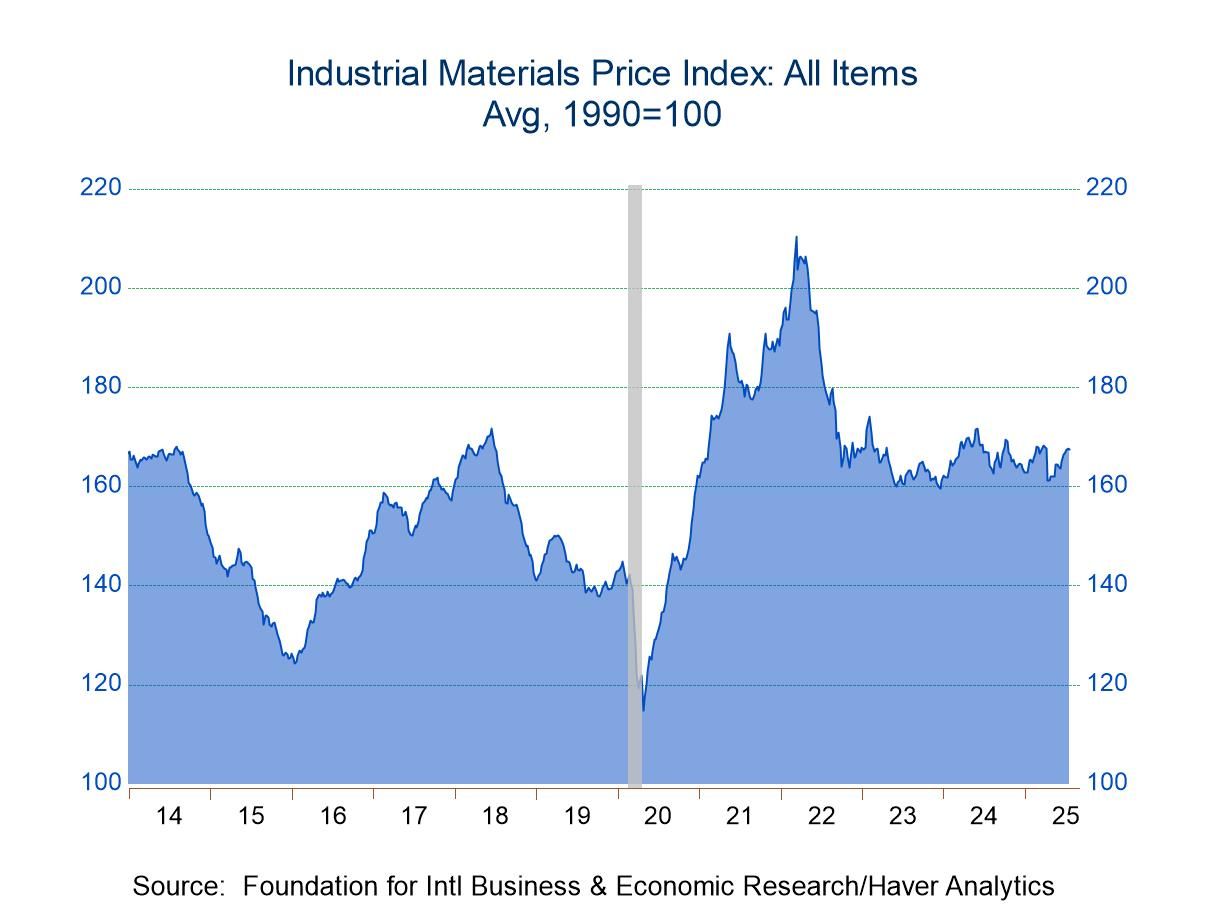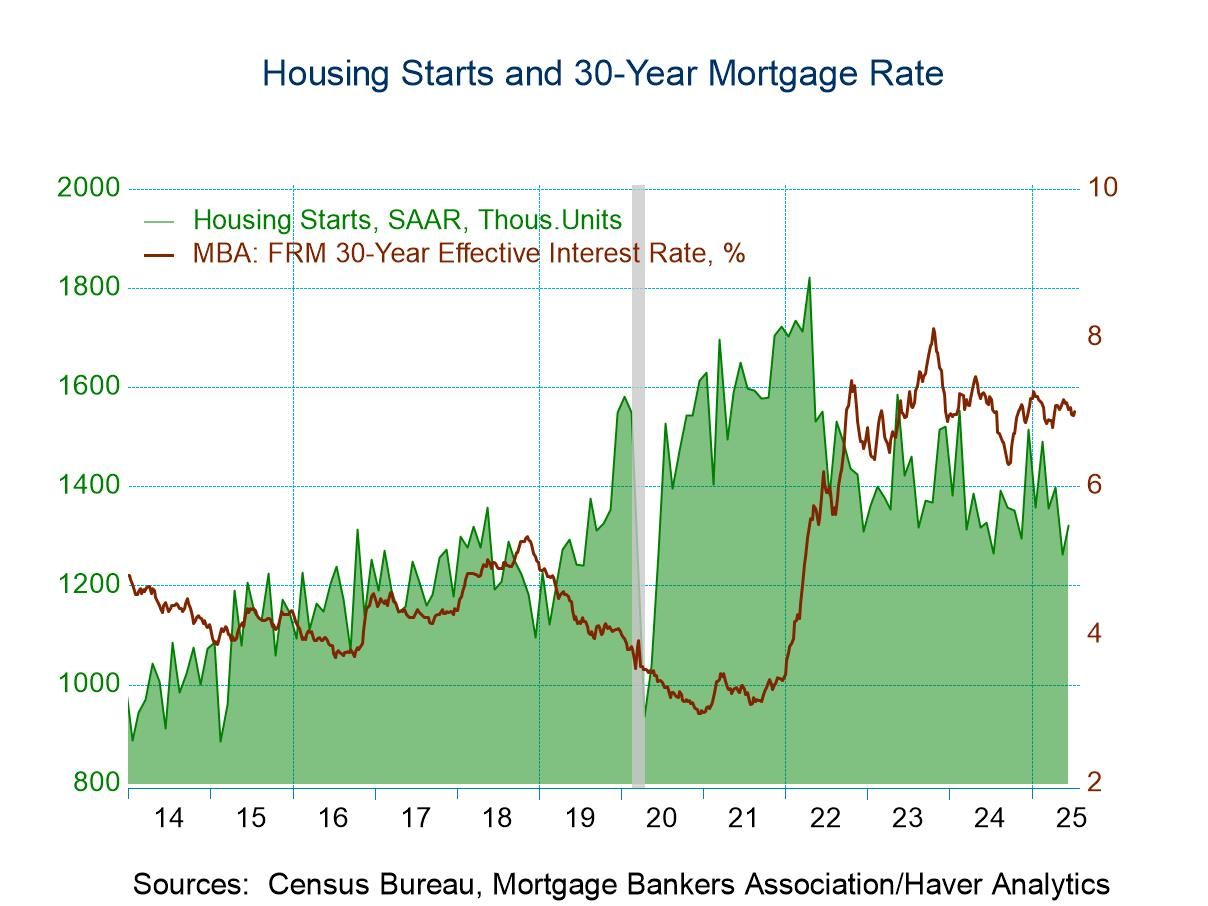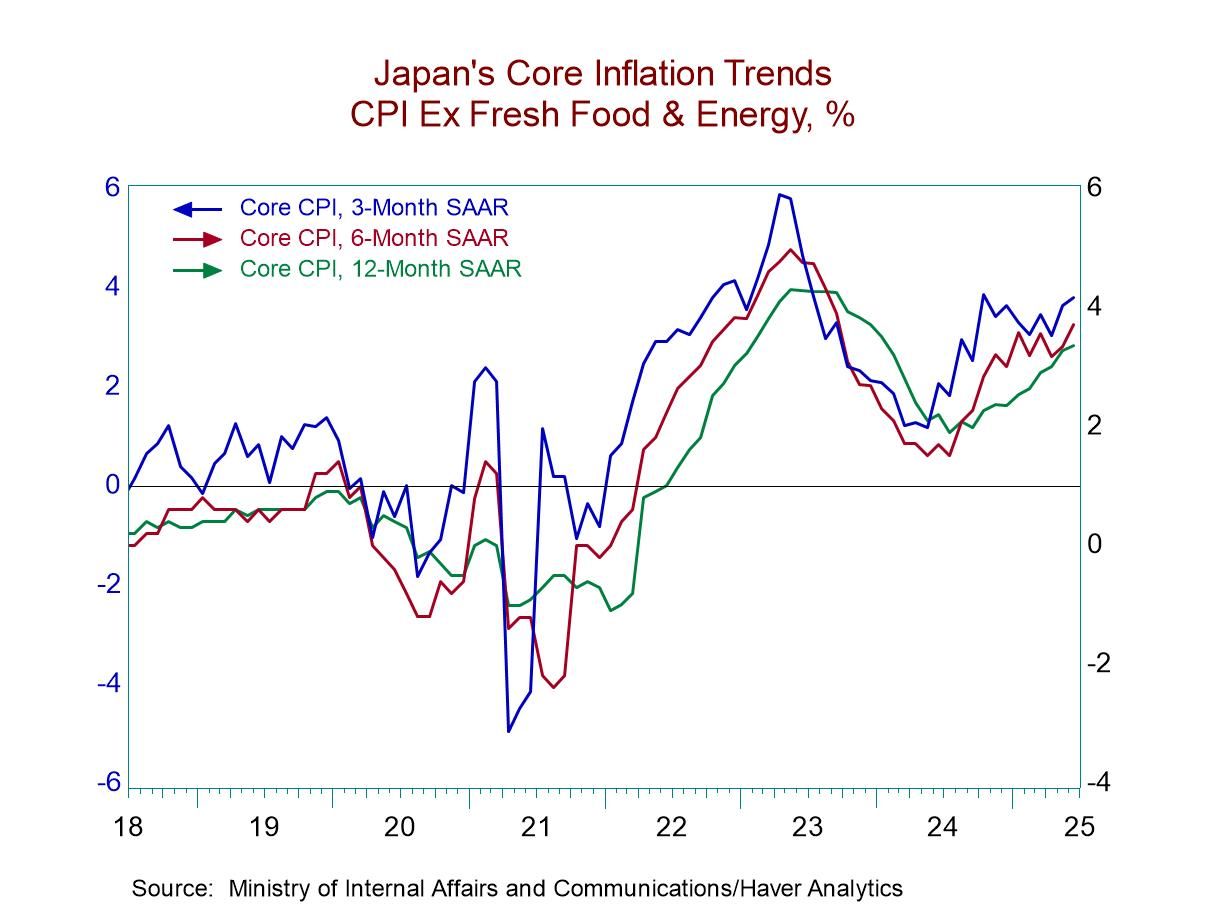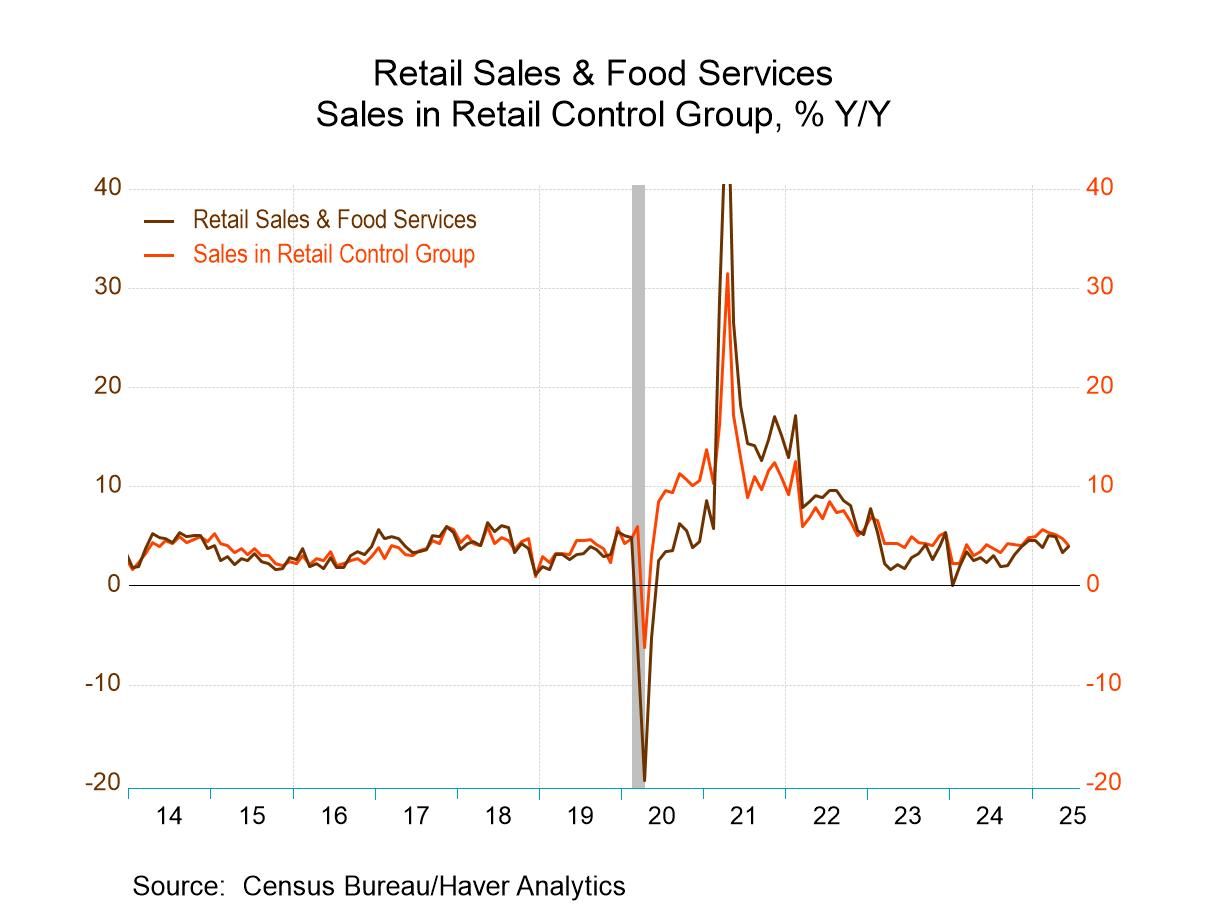 Global| Jan 02 2020
Global| Jan 02 2020Asian PMIs Recovering but Many Still Show Mfg Contraction. None Show Strength or Even Firmness
Summary
China, the strongest MFG PMI, is also losing momentum the fastest. The Asia PMI average ticked higher in December to 50.5 from a dead neutral 50,0 in November (and 49.5 in October). There is a mild contour of recovery and only those [...]
 China, the strongest MFG PMI, is also losing momentum the fastest.
China, the strongest MFG PMI, is also losing momentum the fastest.
The Asia PMI average ticked higher in December to 50.5 from a dead neutral 50,0 in November (and 49.5 in October). There is a mild contour of recovery and only those with a statistically strict view of the PMI data would say that Asian manufacturing is now on the rise. The (unweighted) 50.5 reading is only marginally above the theoretical breakeven value of 50 and is above 50 for only ‘one month in a row’ hardly a strong endorsement of ‘growth.’
For all of the entries in the table (excluding France and Germany since they already are included in EMU) the average December PMI shows bare-bones contraction at 49.9 in December (barely) up from 49.8 in November and from 49.5 in October.
For those of you that remember the Rowan and Martin ‘Laugh-In’ show, the speed of this progress makes Artie Johnson’s tricycle crashes look like high speed events. (here; Artie passed away in 2019).
Regardless of imagery, the progress of growth is slow and in Europe it is still slowly fading. Optimism is coalescing in markets over the US-China Phase-One trade deal that is set for signing in mid-January and in the wake of the PBOC injection of monetary stimulus that was just announced.
However, based on the PMI survey results and momentum the fodder for optimism is not nourishing. Of the seventeen entries in the table (counting all of them) ten are weaker in December than in November. Only two had weakened in November compared to October. But in October seven have weakened month-to-month. Over three months seven weakened compared to the six-month average on balance while twelve weakened over six-months compared to the 12-month average and all but one weakened over 12-months. Momentum is poor but it does show some signs of lesser deterioration.
As for the contraction/expansion line of demarcation seven are below 50 in December compared to ten in November and ten in October. The three-month average shows nine values below 50, the six-month average finds ten below 50 and the 12 month average finds nine below 50.
Meanwhile, there is no evidence of strength. Only Malaysia and South Korea show steady month-to-month improvement in their respective manufacturing PMIs in the last three months. Meanwhile China, Malaysia, Taiwan, S Korea and Turkey show improvements of the 3-month average over the 6-month average and of the six-month average over the 12 month average. But each of these also shows a weaker 12-month average than for 12-months ago. The sense of rebound is stronger in Asia than in Europe where only Germany, France and the UK show improvements over 3-months compared to six months but all are weakening on the broader time lines (…and show no real month-to-month follow-through for improvement).
The ranking of the PMI levels since January of 2015 underline this message as there are only six countries with rankings above their respective medians (a 50% standing) since January of 2015. Of those, China, India, and Malaysia show ‘high relative standings’ but those standings while high relative to the period are still quite pedestrian or weak as China’s high standing corresponds to a PMI value of 51.5, India’s standing corresponds to 52.7 and Malaysia’s standing corresponds to a very weak 50.0. South Korea, with a 75 percentile standing, logs a diffusion value of 50.1 in December. Obviously Asian manufacturing has been weak for so long that relative strength can still refer to quite abject weakness.
But between Europe and the North America, rankings are unequivocally worse with EMU as a 3.3% rank standing, the UK at 1.7% the US at 26.7% and so on.
The charts show some sense of upswing in Asia but it is still an upswing with an upside only near a neutral reading. Beyond the statistics there are some policy developments mentioned above that give rise to hope that the data trend can persist and extend beyond a mere neutral reading.
What makes a New Year?
The New Year comes in – as always- with its share of optimism after what has been a difficult and contentious 2019. However 2020 does not dispel all the doubts from 2019 and while we may be turning over a new leaf there is no guarantee that its one that will not be imbued with the same issues. After all France has the longest strike of its railways since 1968 and the Hong Kong protests press on. There are 250,000 Syrian refuges headed for Turkey in the wake of the Russia Syrian bombings there. The US is sending troops to defend and protect its embassy in Baghdad after what it alleges were attacks on the embassy by forces loyal to Iran. Kim Jong-un’s new manifesto for 2020 is still awaiting disclosure but it is now believed that the flirtation of rapprochement by him is over. Politicians in the US continue to try to juggle the impeachment game for its best effect to their party. A solution to Brexit awaits. Meanwhile, there is no real new stimulus in place and still disruptive events afoot. There is no real sense of how much uncertainty will be reduced by the US-China trade deal or by settling what Brexit will mean. In short 2020 looks a lot like the mature stage of 2019 it had hoped to leave behind. And that is no surprise because flipping the leaf on a calendar from March to April or December to January rarely has much impact on real world events. Nonetheless, Happy 2020.
And lest you think there will be more certainty because it is 2020 let me remind you that 20/20 vision refers to being able to see at 20 feet what most people can see from 20 feet. While there is a legacy of expressions that treats 20/20 as if it is ‘perfect vision’ it is not; 20/20 is only average. And of late average vision has not been very good. So keep that in mind as well.
Robert Brusca
AuthorMore in Author Profile »Robert A. Brusca is Chief Economist of Fact and Opinion Economics, a consulting firm he founded in Manhattan. He has been an economist on Wall Street for over 25 years. He has visited central banking and large institutional clients in over 30 countries in his career as an economist. Mr. Brusca was a Divisional Research Chief at the Federal Reserve Bank of NY (Chief of the International Financial markets Division), a Fed Watcher at Irving Trust and Chief Economist at Nikko Securities International. He is widely quoted and appears in various media. Mr. Brusca holds an MA and Ph.D. in economics from Michigan State University and a BA in Economics from the University of Michigan. His research pursues his strong interests in non aligned policy economics as well as international economics. FAO Economics’ research targets investors to assist them in making better investment decisions in stocks, bonds and in a variety of international assets. The company does not manage money and has no conflicts in giving economic advice.






